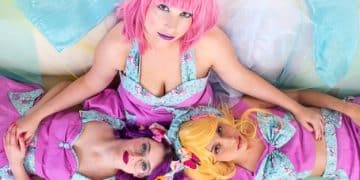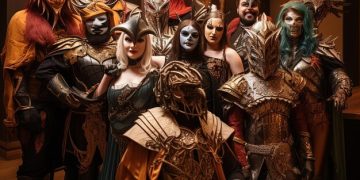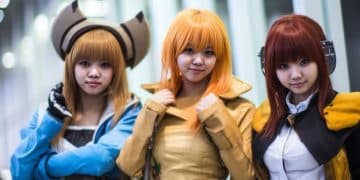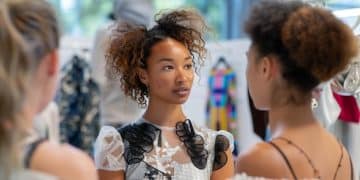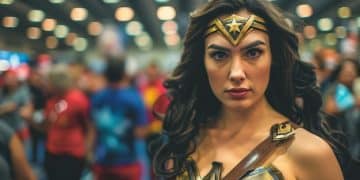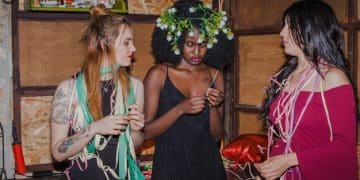The Ultimate Guide to Cosplay Photography: Tips & Tricks
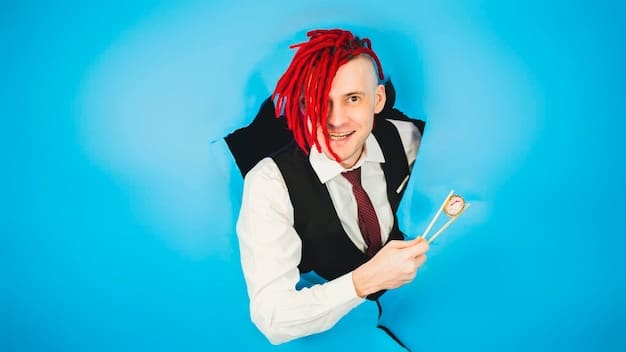
Cosplay photography is the art of capturing cosplayers in character, emphasizing costume detail and storytelling through imagery, blending technical skill with creative vision to bring fictional worlds to life.
Ready to transform your cosplay photography from snapshots into stunning works of art? Dive into the world where creativity meets technical skill, and every shot tells a story.
What is Cosplay Photography?
Cosplay photography is more than just taking pictures of people in costumes. It’s about capturing the essence of a character and telling a story through images. It combines elements of portraiture, fashion photography, and even stage photography to create visually stunning depictions of beloved characters from various media, like video games, anime, and comic books.
It’s a collaborative art form where photographers and cosplayers work together to bring these characters to life, often requiring careful planning, creative posing, and an understanding of both the character’s personality and the technical aspects of photography.
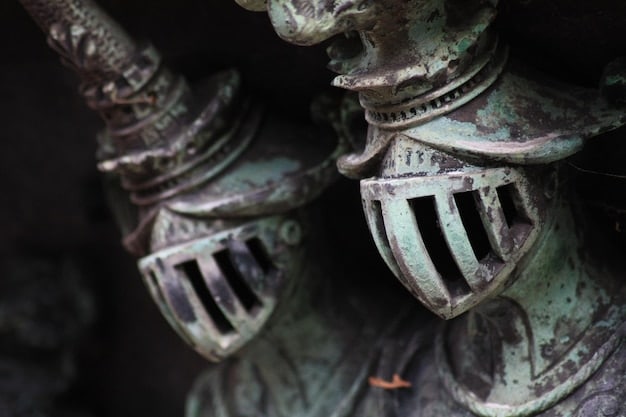
The Symbiotic Relationship Between Cosplayer and Photographer
The secret to captivating cosplay photography lies in the partnership between the cosplayer and the photographer. Each brings unique skills and perspectives to the table, resulting in something truly special.
- Shared Vision: Discuss the character’s personality, desired mood, and specific poses beforehand to ensure everyone is on the same page.
- Trust and Communication: Encourage open dialogue throughout the shoot. Feedback and adjustments are crucial for capturing the perfect shot.
- Mutual Respect: Recognize the cosplayer’s dedication to their costume and the photographer’s expertise in lighting, composition, and editing.
Understanding the nuances of the symbiosis means better planning, more creative ideas, and ultimately, more captivating images that resonate with viewers. It’s about building a relationship where both parties feel valued and can contribute their best work.
In short, cosplay photography is a dynamic space where collaboration, creativity, and technical expertise meet to celebrate beloved characters, communities, and fandoms.
Essential Gear for Cosplay Photography
Having the right gear is crucial for achieving professional-looking cosplay photographs. While skill and creativity are invaluable, the tools you use can significantly impact the quality of your images. From cameras and lenses to lighting equipment, each piece of gear plays a vital role in capturing the essence of a character.
Choosing wisely can elevate your cosplay photography, allowing you to create stunning visuals that truly bring characters to life.
Choosing the Right Camera and Lens
Cameras: A DSLR or mirrorless camera is often preferred for its versatility and image quality. Models with good low-light performance and fast autofocus are particularly beneficial.
Lenses: Versatile lenses make the job interesting. Consider a wide-angle lens for environmental shots and a telephoto lens for detailed portraits. A prime lens with a wide aperture (e.g., f/1.8) can create beautiful bokeh effects.
- Wide-Angle Lens (16-35mm): Ideal for expansive shots that showcase the cosplayer within a large setting, perfect for conventions or natural landscapes.
- Standard Zoom Lens (24-70mm): A versatile option for a variety of shots, from full-body portraits to closer details, offering flexibility in different shooting environments.
- Telephoto Lens (70-200mm): Excellent for capturing detailed portraits from a distance, allowing you to isolate the cosplayer and create a shallow depth of field, blurring the background.
The right gear allows you to capture crisp, vibrant details and create visually stunning images that do justice to the cosplayer’s hard work and dedication.
Ultimately, the gear you choose sets the foundation for your cosplay photography. Investing in dependable tools enhances your capacity to capture cosplayers and bring fictional worlds to life through your images.
Mastering Lighting Techniques
Lighting can dramatically enhance or diminish cosplay photos. Mastering lighting techniques is essential for creating photographs that pop. Knowing how to manipulate light, whether natural or artificial, can significantly elevate the quality of your shots and bring out the best in your subjects.
Understanding the nuances of lighting, combined with creative application, makes all the difference in achieving stunning visual results.
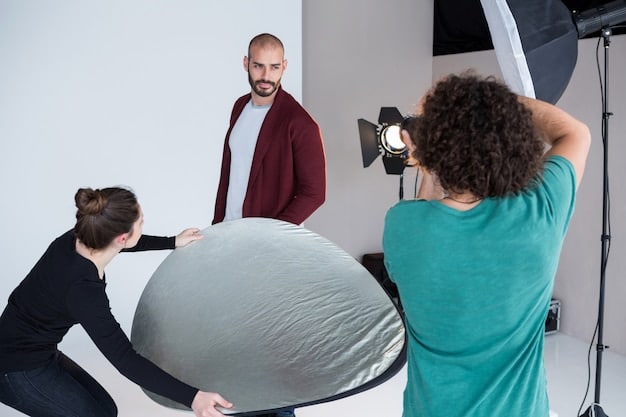
Harnessing Natural Light
Natural light provides a soft, flattering glow and is cost-effective to boot. Understanding how to harness it effectively is a key skill for any cosplay photographer.
Shooting during the golden hours—early morning and late afternoon—provides the most appealing light. Overcast days can also be beneficial, offering diffused light that minimizes harsh shadows. But if you’re shooting outdoors in direct sunlight, consider using a diffuser to soften the light and prevent stark shadows. Position your subject so their face is evenly lit. Avoid having the sun directly behind them, which can create silhouettes, unless that’s your desired effect.
Using natural light effectively takes practice and observation, but the results are worth the effort. Remember to experiment with different angles and times of day to discover what works best for your style and subject.
The mastery of lighting techniques, whether you are working with natural light or artificial sources, is the key to capturing the essence of your subjects and bringing an added dimension to your storytelling. With thoughtful planning and a keen eye for detail, you can turn ordinary shots into extraordinary images.
Composition and Posing Tips
Composition and posing are vital elements in cosplay photography, helping to tell a story and capture the essence of a character. By carefully arranging the elements in your frame and directing your subject into expressive poses, you can create images that are both visually appealing and emotionally resonant.
Composition involves organizing the elements within your frame to create a visually attractive and balanced scene, while posing involves guiding the cosplayer to adopt positions and expressions that convey the character’s personality and mood.
Compositional Guidelines and Posing Techniques:
Rule of Thirds: Divide your frame into nine equal parts with two horizontal and two vertical lines. Placing key elements along these lines or at their intersections can create a more dynamic composition.
Leading Lines: Use lines within the scene to draw the viewer’s eye toward the subject. Roads, fences, or even rows of trees can serve as leading lines.
- Dynamic Poses: Encourage cosplayers to move and interact with their surroundings. This can add energy and life to the photograph, making it more engaging.
- Character-Appropriate Poses: Research the character’s typical stances and expressions. Authenticity can make a big difference in how the photograph is received.
- Communication: Provide clear and specific direction to the cosplayer. Suggest minor adjustments to their posture or expression to achieve the desired effect.
Good composition and posing work together to create compelling images that stand out and capture the viewer’s imagination. Every aspect, from where the subject is placed in the frame to what expression they wear, is important for telling a story.
Great photography showcases your subject and tells a compelling story. These elements not only make your images visually appealing but also deeply engaging and memorable.
Post-Processing for Cosplay Photography
Post-processing is an essential step in cosplay photography. It lets you enhance your images, correct any imperfections, and add a layer of polish that elevates the final result. From basic adjustments to creative enhancements, post-processing tools can transform a good photo into a fantastic one.
This enhances the visual appeal of your photos and aligns them more closely with your creative vision, making the time spent learning these skills well worth the effort.
The Essentials of Post-Processing
Several key processes can make a huge difference in the final look of your images. These include color correction, sharpening, and retouching. Understanding when and how to apply these techniques can significantly elevate the quality of your cosplay photos.
Color Correction: Adjusting the white balance, exposure, and color saturation. Enhancing the initial RAW image data by optimizing levels for brightness and contrast. Using histograms to assess shadows and highlights to give visual balance.
Retouching: Removing blemishes, distracting elements, and skin smoothing to improve the overall visual cleanliness
- Adobe Photoshop: The industry-standard software for creative imaging and post-processing. Offers advanced tools for retouching, color correction, and complex edits.
- Adobe Lightroom: Great for organizing large batches of photos and applying consistent edits. Ideal for color grading and basic adjustments.
- GIMP (GNU Image Manipulation Program): A free and open-source alternative to Photoshop. Offers similar functionalities, making it a great option for those on a budget.
Good photographs can be made great through post-processing by adding polish and precision. These skills not only improve the quality of individual images but also allow you to develop a cohesive visual style across your entire portfolio.
Applying these basic and advanced steps will greatly improve the photo and allow for a better and more complete final shot.
Building Your Cosplay Photography Brand
In the world of cosplay photography, building a recognizable brand can help you stand out and attract more clients. A brand is more than just a name; it’s the unique identity that represents your work and values. Developing a strong brand requires a mix of creative skill, marketing know-how, and genuine engagement with the cosplay community.
Having a well-defined brand can differentiate you from the competition and create lasting connections with cosplayers, event organizers, and fans.
Engaging with the Cosplay Community:
There are several ways to engage and integrate with the community, and these efforts can greatly benefit the photographer.
Consistently sharing quality content is essential for building an audience and establishing yourself as an authority in cosplay photography. Showcase your best work, share behind-the-scenes glimpses, and offer tips or tutorials to engage your audience.
Networking with other photographers, creatives, and cosplayers can open doors to collaborations, sponsorships, and new opportunities. Attend conventions, join online forums, and participate in collaborative projects to expand your network.
- Unique Style: Develop a distinct style by experimenting with lighting, composition, and editing techniques. A recognizable style can help your images stand out.
- Consistent Quality: Maintaining high standards in your work reinforces your brand’s credibility and assures clients that they can expect professional results.
- Social Media: Utilizing platforms like Instagram, Facebook, and Twitter to showcase your work and connect with followers. Consistent engagement can increase visibility and attract bookings.
Brand identity sets the foundation for success in this visually driven field.
By creating a memorable online presence and having a unique style for your photos, you will stand out and be memorable for a very long time.
| Key Element | Brief Description |
|---|---|
| 📸 Essential Gear | Camera, lenses, and lighting equipment are vital for crisp, vibrant shots. |
| 💡 Lighting Mastery | Using soft, diffused light to eliminate harsh shadows and enhance costume details. |
| 🎭 Posing & Composition | Dynamic poses and the Rule of Thirds help capture the character’s essence. |
| ✨ Post-Processing | Enhance photos with color correction, retouching, and creative edits. |
Frequently Asked Questions
▼
A DSLR or mirrorless camera with good low-light performance and fast autofocus is ideal. Sony Alpha series, Canon EOS, and Nikon Z series are popular options.
▼
Lighting is super important! It can dramatically affect the quality of your photos. Use soft, diffused light to highlight costume details, and avoid harsh shadows.
▼
Focus on color correction, sharpening, and retouching. Adobe Photoshop and Lightroom offer great tools for these tasks and greatly improve image quality.
▼
Encourage dynamic poses that reflect the character’s personality. Provide clear direction and make small adjustments to capture the perfect stance. Take into account the character’s story.
▼
Share quality content, engage with the cosplay community, and maintain a consistent style. Social media is vital for showcasing your work and connecting with fans.
Conclusion
Mastering cosplay photography involves a blend of technical skill, creative vision, and collaboration. By understanding essential gear, mastering lighting, and developing posing techniques, you will greatly enhance your ability to capture stunning images that truly bring characters to life. Building a brand through consistent quality and active community involvement will additionally make it easier to have a loyal following.
